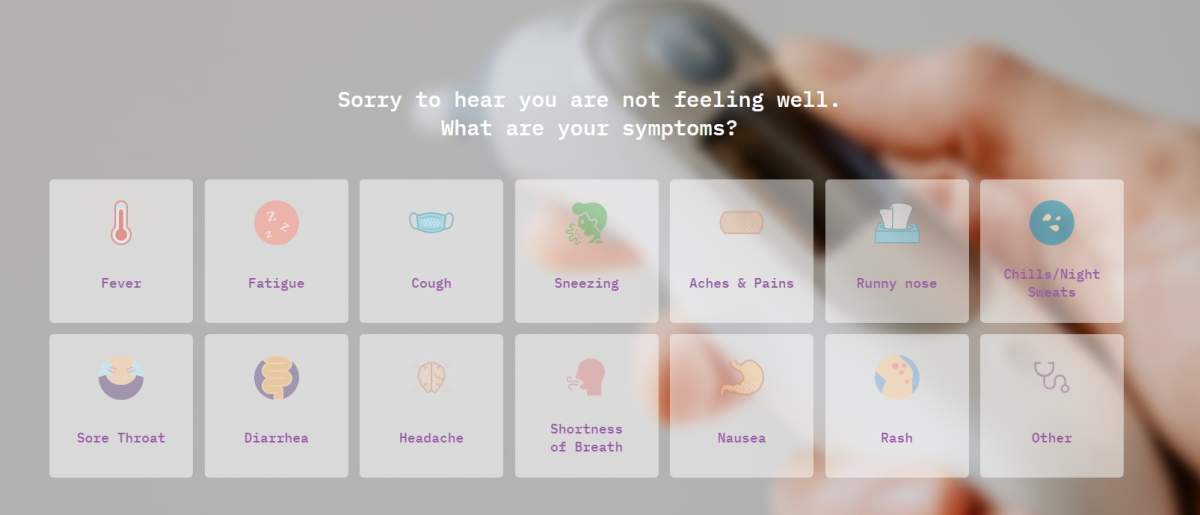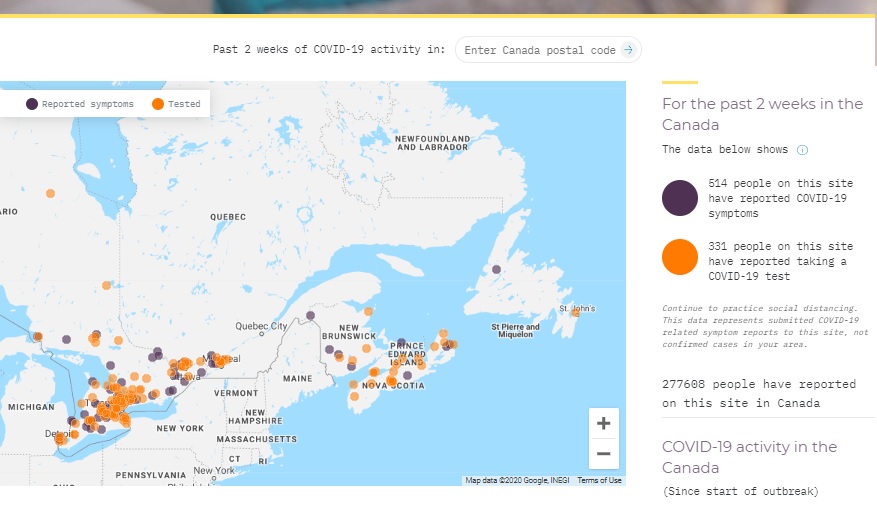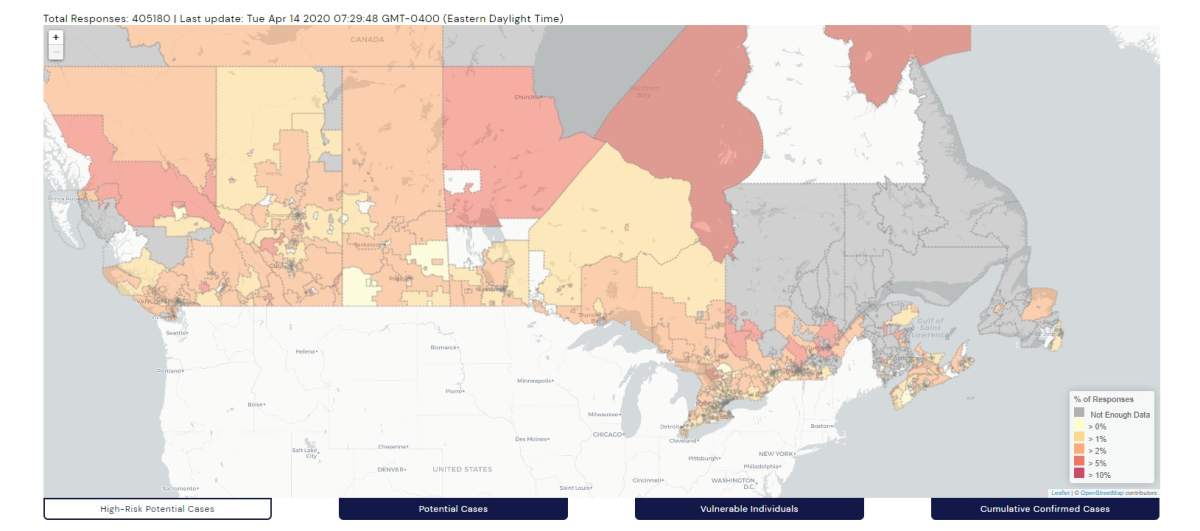By now, Canadians are accustomed to the daily tally of coronavirus cases in the country. But have you ever wondered how many people in your neighbourhood have symptoms or have been tested?

Some Canadian researchers are tapping into crowdsourcing technology to achieve just that.
COVID Near You and Flatten.ca are websites that map out confirmed and suspected cases of COVID-19 based on data reported from people in real time. Both sites use anonymous, self-reported data about symptoms and tests to narrow in on potential cases or outbreaks in communities.
Testing is “severely lacking” in much of Canada and the U.S., said John Brownstein, chief innovation officer at Boston Children’s Hospital and professor at Harvard Medical School, which is making it difficult to paint a clear picture of what’s going on in communities.
He said technology like this can help fill data gaps and better inform public health entities and citizens.
“Most data we get for public health is from interactions with health systems. So if you go see a doctor or you’re hospitalized, we get that information. But we know with COVID-19, the majority of illness is mild, and most of those people aren’t getting tested or getting seen by a doctor,” he told Global News via phone.

“We don’t have a full view of the illness in the community, which is important to understanding the impact, the burden of the disease, where we are on the epidemic curve, social-distancing impacts — all those things.”
COVID Near You is run by a team of epidemiologists and researchers at Harvard University and was adapted from Brownstein’s previous project, Flu Near You. Canada became part of the project about a week ago.
Users are asked a simple question to start off: “How are you feeling?” If you feel well, you will be asked to fill out a form about whether you’ve received a flu vaccine, along with your age, gender and the first three characters of your postal code.
Brownstein said the app employs the same type of technology security typically used to store electronic medical record data.

Get weekly health news
“We’re not asking for personal identifiers,” he said, addressing possible privacy concerns. He nodded to only requiring the first three digits of a person’s postal code as part of the anonymity.
“We’re not displaying or sharing information at a level that you could reversely identify someone. It’s all aggregate, de-identified data.”
If you choose “not feeling well,” you are asked to choose from a list of symptoms, including common tell-tale signs like fever, shortness of breath, cough, fatigue or aches and pains.
Once you’ve identified your symptoms, the app asks questions related to travel history, close contact with a confirmed case and whether you’ve isolated or quarantined.
From there, the site may ask whether you’ve been tested or hospitalized for COVID-19 before asking for location-related information.
That data is populated to an interactive map with either a purple or orange dot as a marker — one designating people who have reported COVID-19 symptoms, the other for people who reported taking an official test.
Flatten.ca works similarly, but it isn’t identical.
The website was created by a group of Canadian engineering students who wanted to find a way to help after the pandemic put their academic year on hold.
Users are also asked to fill out a form about symptoms and provide the first three digits of their postal code, which is then populated on a heat map to show the prevalence of possible cases in a community.
What separates Flatten.ca is its ability to map regions that have a “high density of vulnerable potential COVID-19 cases,” such as older Canadians or those who are immunocompromised, said Shrey Jain, a University of Toronto student and the president and director of Flatten.ca. It also maps potential high-risk cases, like an elderly person who reported symptoms.
“Self-reporting is a way to streamline the data collection process. It’s a lot faster as well,” he told Global News.
“It’s still a great indication of where a hotbed might be before it actually becomes one. It’s like an early detection model. But the more people who use it, the more powerful the tool becomes.”

These types of projects are an effective way to get a better reflection of the health and wellness of the country during COVID-19, said Isaac Bogoch, an infectious disease specialist based out of Toronto General Hospital, but he cautioned against seeing these tools as definitive.
There’s still going to be an “underappreciation” of the spread in some regions, he said, so the crowdsourced data should be considered “complementary tools” in the overall fight against the virus.
“There’s no one perfect surveillance tool,” he said.
“When we think about surveillance, we have to appreciate the inherent strengths and weaknesses of each tool. We can’t take any individual piece of information in isolation. We have to put it in a broader context to really have a better understanding. So when we add surveillance tools together, we can get that broader picture of the disease in Canada and how it’s changed with time.”

Both COVID Near You and Flatten.ca are working toward collaborating with other such sites to share data and ultimately expand their reach.
Over a single day, the number of Canadian users on COVID Near You jumped from 40,000 to over 250,000, and it’s only increasing, Brownstein said. Nearly half a million Americans had self-reported on the site as of April 14.
Flatten.ca had upwards of 400,000 users as of April 14.
“The more submissions we get, the higher the value of the data,” Brownstein said, adding that it’s just as important to have healthy Canadians participate.
“We need everyone because you need a denominator. You need people that are healthy to understand the population of people that could be reporting.”












Comments